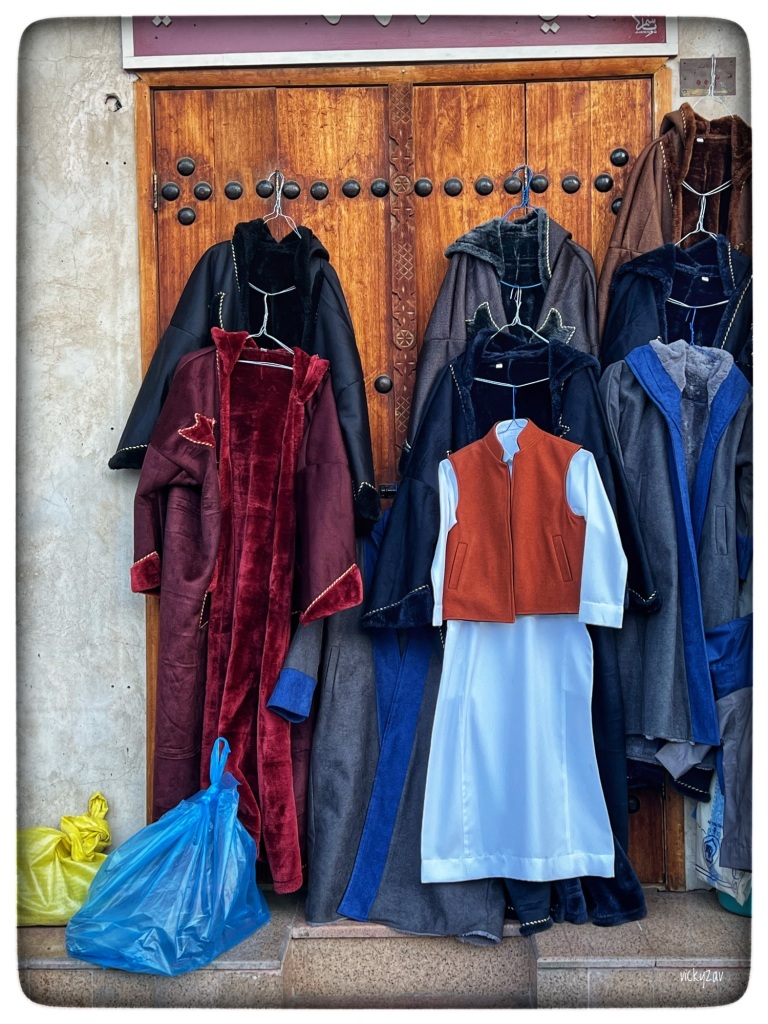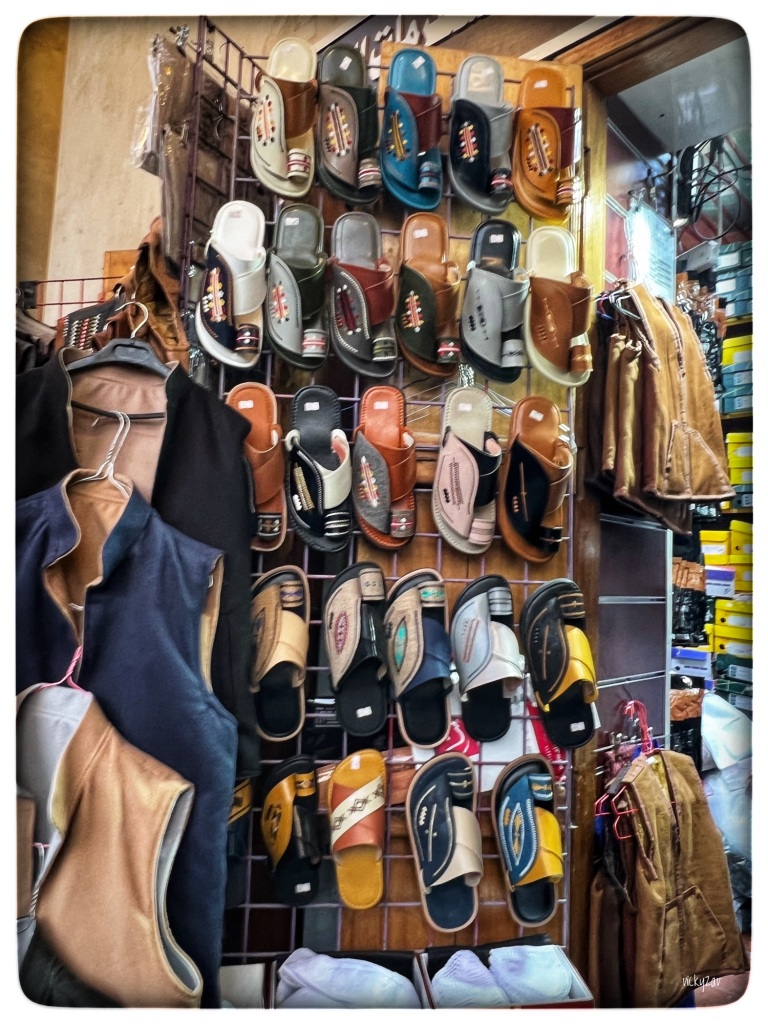Information about Al Hofuf ( courtesy of Wiki)
Al-Hofuf (Arabic ٱلْهُفُوف al-Hufūf, also spelled Hofuf or Hufuf, also known as “Al-Hasa”, “Al-Ahsa” or “Al-Hassa”) is the major urban city in the Al-Ahsa oasis in the Eastern Province of Saudi Arabia with a population of 858,395 (as of 2021). It is also known for being one of the largest date producers in the world, and for its old markets and palaces.
Historically Hofuf made textiles out of wool, silk, and cotton. The town was also renowned for its fruit of the date palm, the Arabs considering the khalasi variety of dates, locally grown in Hofuf, and also the fardh variety of Oman, among the best. As of 1920, the city was known for making coffee pots from brass and silver.
I didn’t really know what to expect from our day exploring Hofuf, to me it was just a place we had to spend time in to rest from the long drive to get there, before heading onwards.
But research showed there was plenty of interest to occupy us for a day, so after a good night’s sleep we headed out early to explore.
As we drove through empty streets, the realization hit us that it was Friday, Holy day and first day of the weekend in Saudi. Everything closes, people pray, rest and attend midday prayers…life starts again early evening. Hmm, were we going to miss everything and regret the error?!
Our first stop was the Fish market and as we drove into the old town, daily life for the immigrant workers, who make up so much of the workforce, was already in full swing.
The Fish market is small but was buzzing with vendors and buyers. Apart from the initial shock when we appeared, suspect they don’t get too many British tourists popping in and one a woman too, we were welcomed inside.
The staff are mainly Indian, most spoke some English and we were surrounded with friendly chatter and I was given allowance to take photographs from everyone whom I asked.
Healthy fresh fish and shellfish, Tuna, RedSnapper, Grouper, Barracuda, Hamour, Sheri, Blue crab, cuttlefish, prawns and a myriad of other smaller fish unknown to me were all on sale, tempting, but it’s not a cooking trip for me!






Not far away is the Qasr Ibrahim (palace) in the old town area.We had thought it would be closed when the Friday realization fell into place, but decided we would go and have a look. The outside is stunning and I expect the inside is worth a visit.


It was built in 1556 by Ali Ibn Ahmed Ibn Lawand Al-Burayki, the Ottoman governor of the time. The castle was renovated in 1801 by the Saudi governor Ibrahim Ibn ‘Ufaysan. Several historians believe that the castle was named after him.
Ibrahim Palace covers an area of 16500 square meters. Moreover, it is characterized by an architectural style that blends the Islamic and military features with the traditional architecture styles of Al-Ahsa region. Those styles are exhibited in the arcs, domes and ornamental designs.
In 2018, Al Ahsa Oasis (the reason why the town of Hofuf was created) became the fifth Saudi site to be registered on the Unesco World Heritage site. Qasr Ibrahim Mosque was included as one of the 12 sites.
The Sharia Dome school is opposite, a school for teaching Sharia and linguistic science. The main building is being renovated but the entrance area is complete.



Close by is the beautiful Al Koot Heritage hotel. It would have been lovely to have stayed here but a tad over our budget…





Behind the hotel a small area is getting a really funky face-lift…I loved it! Strong vibrant traditional colors with traditional design work slanted towards the new era…it will be a great place to visit when complete.
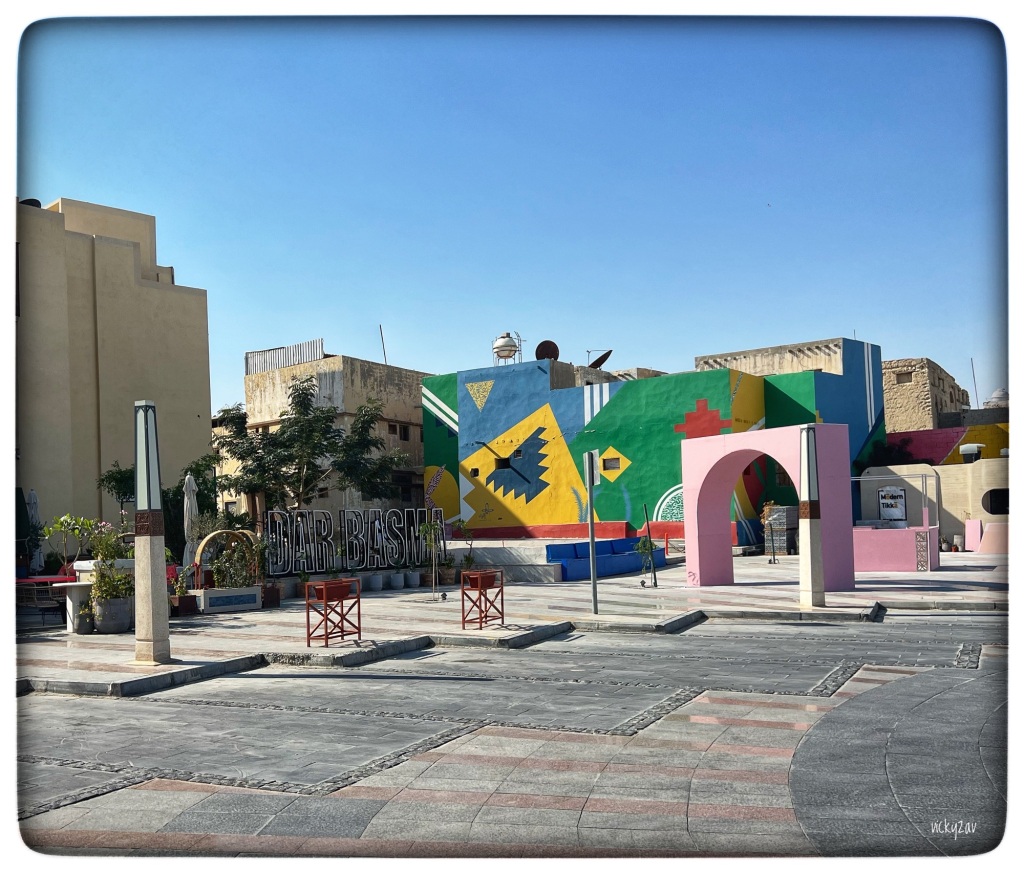





The old town has a long way to go before renovations are completed. Many of the mud brick houses are ruins, but what we saw, we loved!
Flashing round a corner leaving the old town we stumbled across this huge colorful mural, it certainly livened up the area…
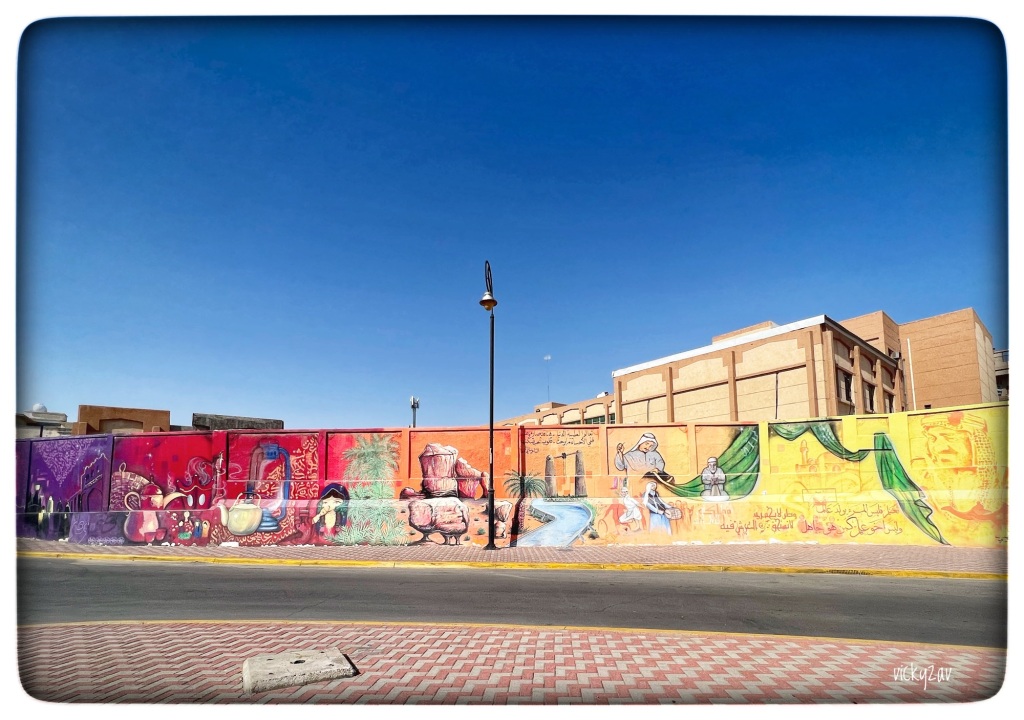

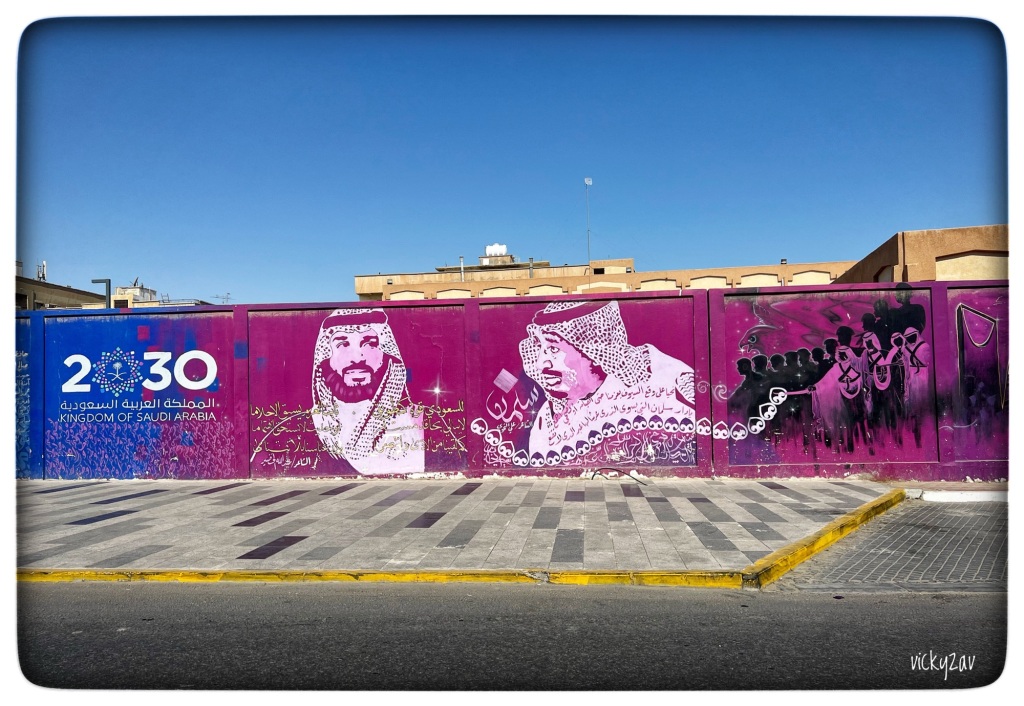
Even the public toilets had a nice touch with a traditional design around the top. All of them in town have this design, makes them easy to spot!

Outside Hofuf there are some amazing rock formations to visit. The first mountain we arrived at , Jabal Shabah is home to an adventure park project, started around 2017 but it never became operational so it’s like gazing onto a ghost park. Empty water slides, cable cars suspended in the air motionless, empty suspension bridges, unused high ropes frames, all the infrastructure in place but it appears never used.
We found a road up to the top, we could see picnic tables and Gazebos set up to take in the magnificent views but a pretty mean looking road barrier stopped us getting in.

I’m sure that this project will somehow be revitalized as the location and views are stunning. It has a slightly unnerving feel about it at present, such huge amount of work and money and it literally hangs in suspension…
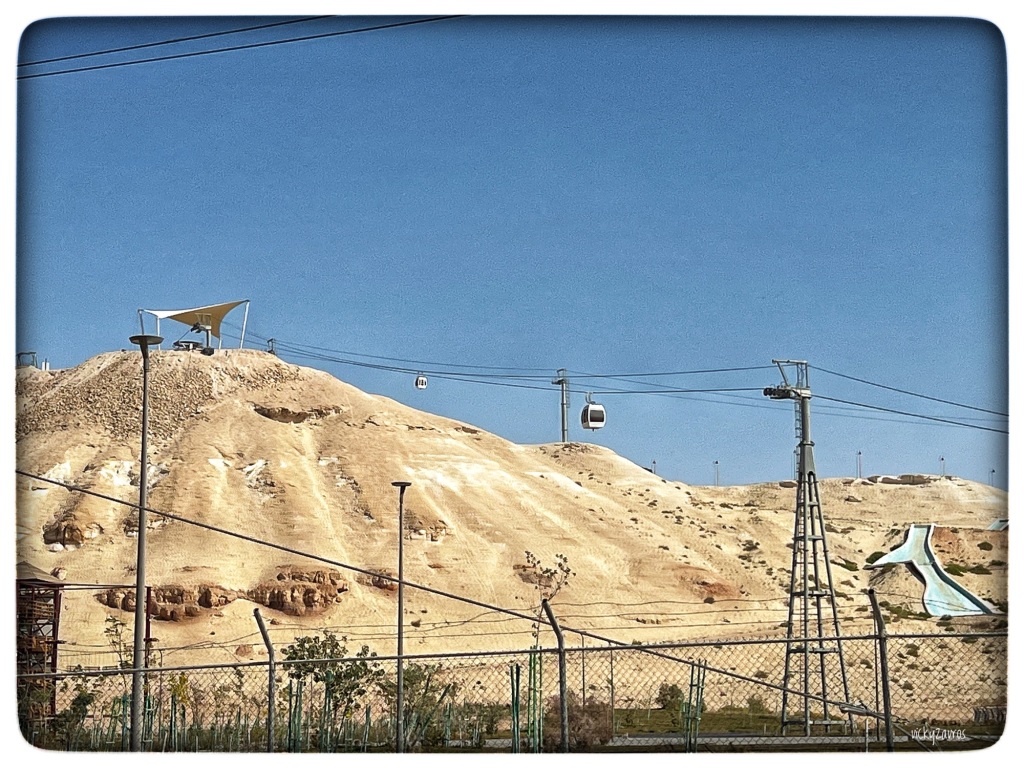



We pulled to the roadside lower down for photos but it was very hazy and the photos don’t do justice to the view of the town and the massive date plantations

We then headed to Al Qarah hill and cave, we found the little road that accesses the summit and marveled at some extraordinary rock formations and views, but didn’t go cave finding, not my thing!









Leaving to head towards the desert rocks we found ourselves amidst date plantations and came across a Heritage building, sadly crumbled, hopefully it won’t degrade further now it’s marked as a heritage site. Either a small fort or palace.

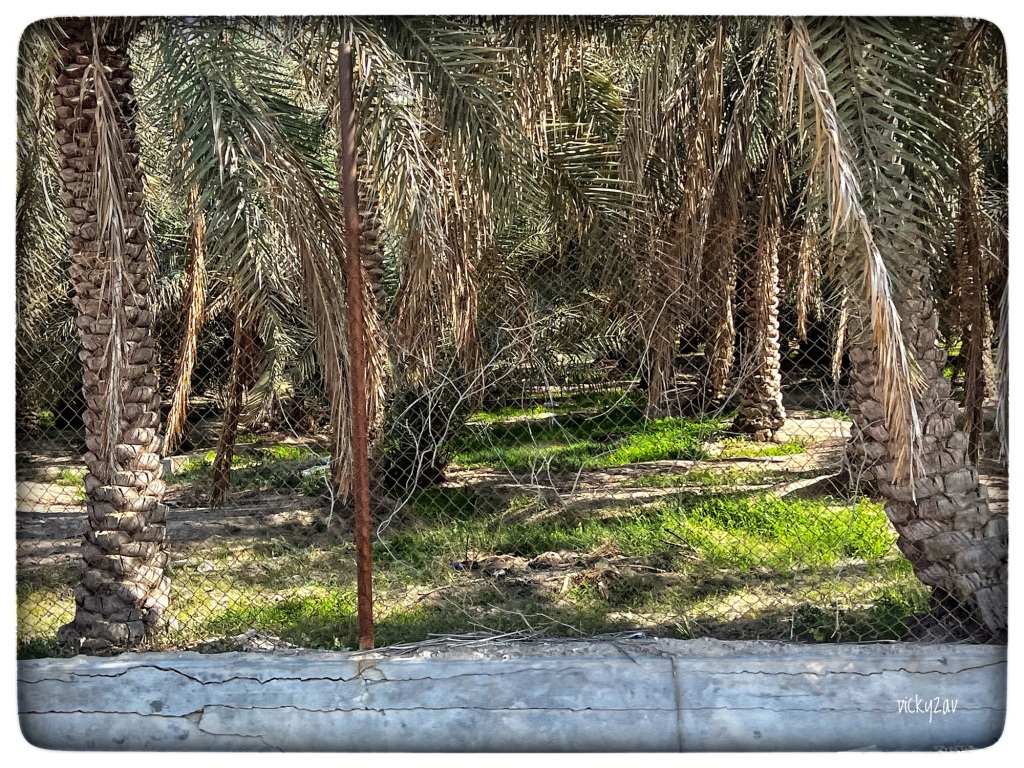
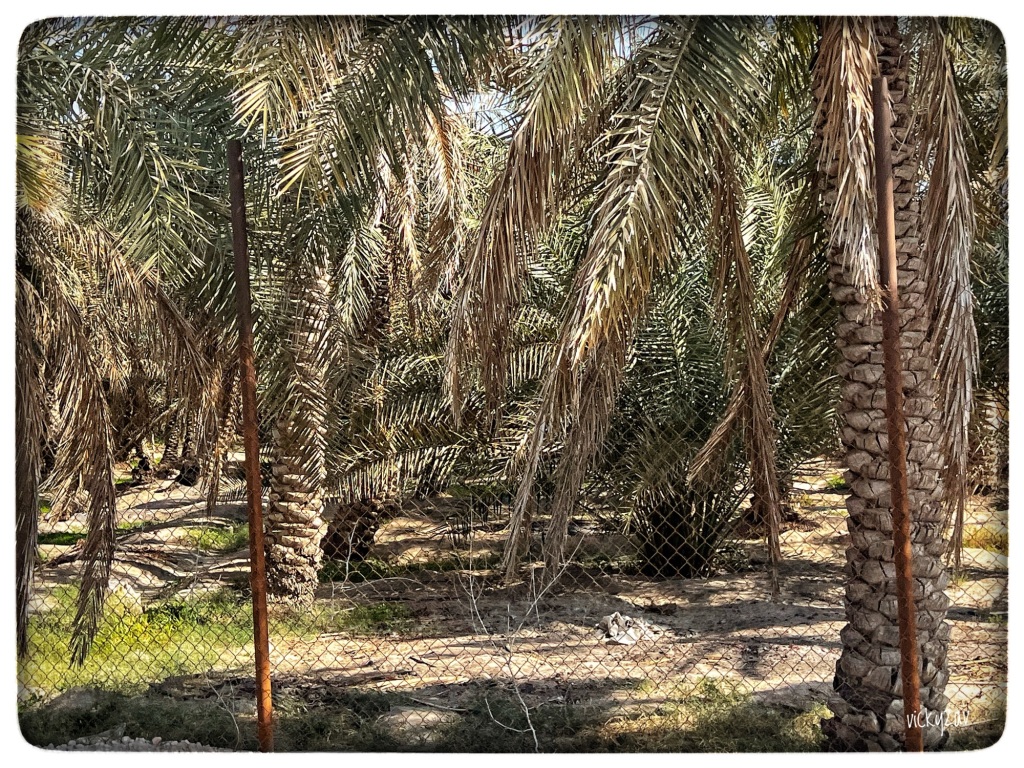
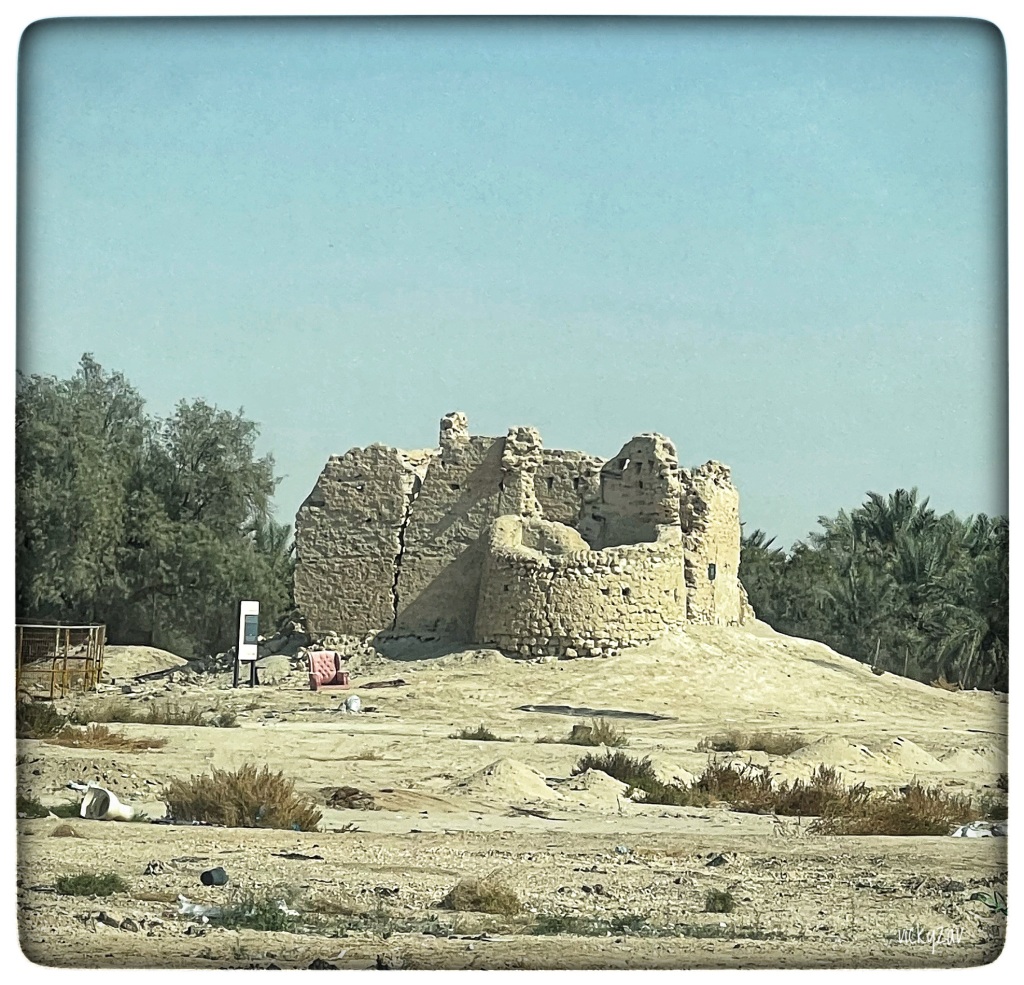

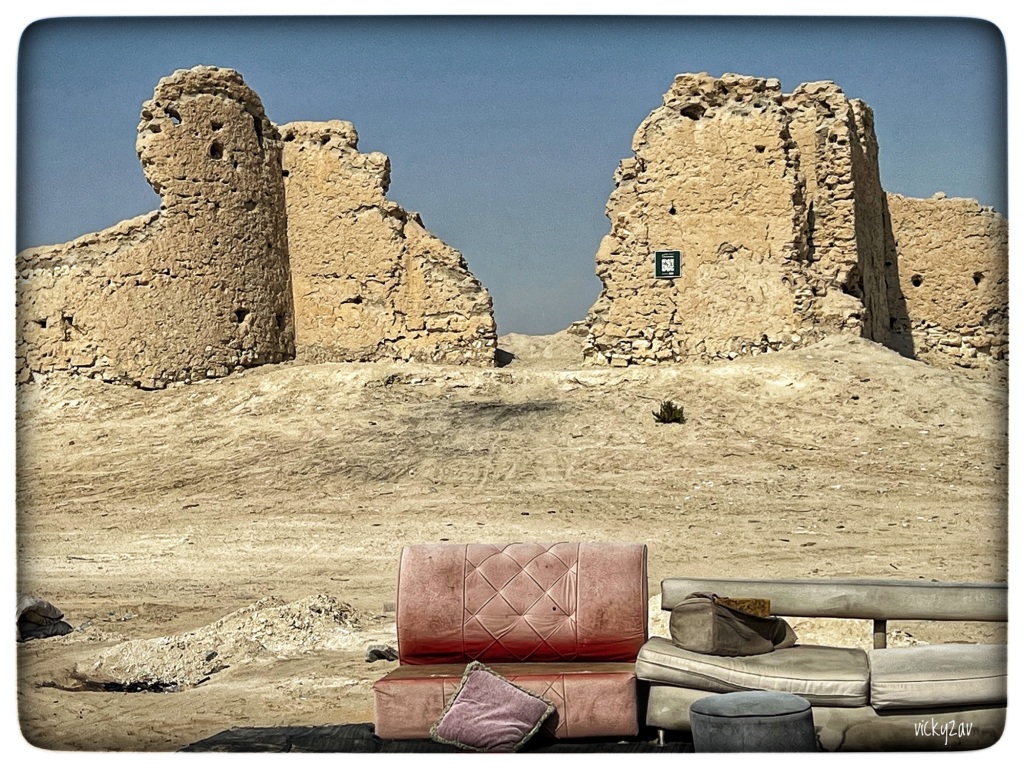
Heading out to the desert we passed through a massive equestrian area and just behind stood these beautiful rock formations, the smaller one is Jebel Arba and the larger is Jebel Dukhnah.




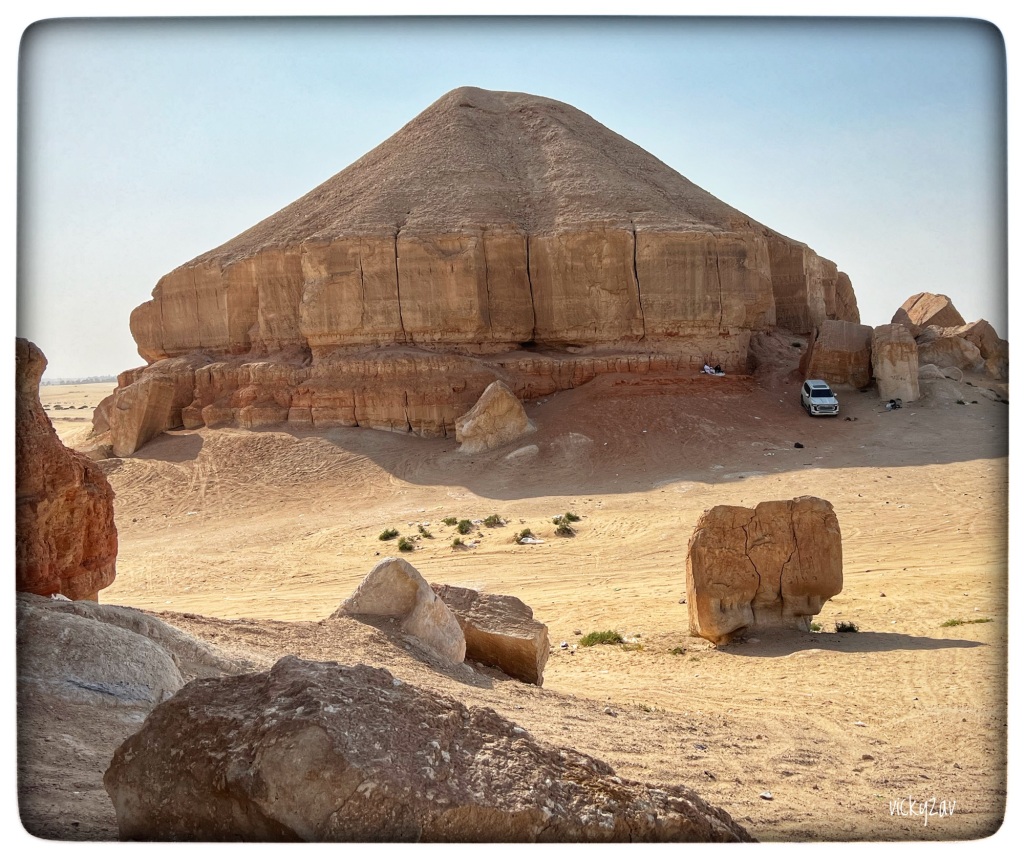


As many of you have realized from previous posts, I have a great love of doors. Hofuf did not disappoint in that respect, worthy of a separate post, watch for that to open up, any door lovers!
Evening saw us heading to the Souk Qaysariya…we were fairly early, arriving just before sunset but the atmosphere was starting to buzz, full of people shopping and dining and just socializing. The souk has been renovated beautifully and was one of the largest covered markets in the Arabian gulf and the oldest. It was established in 1822. The souk architecture features traditional Al Ahsa design with covered passages, has 422 small stalls selling clothing, herbs, embroidery etc, and was included in the Unesco World Heritage list in 2018.
One notable point for me is that all visitors are welcomed by young girls in traditional costume and slightly older girls who came to ask if we needed help to find our way and explain about the Souk. It was very refreshing to see such interaction…


